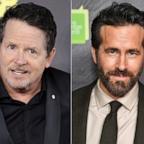Crumbling JFK Gravesite Gets Facelift
Original stone mason joins restoration effort at Arlington National Cemetery.
Oct. 29, 2010 -- Thousands of visitors come to Arlington National Cemetery each day to visit the tombs of John F. Kennedy and his family members and read the late president's legendary words engraved in a granite wall opposite the eternal flame: "Ask not what your country can do for you. Ask what you can do for your country."
But 45 years after those iconic words were etched into stone, the letters have faded and barely are legible to sightseers.
Restoration to the memorial wall began Thursday with the original stone mason, John Everett Benson, and a historical conservator, Gordon Ponsford, kneeling at the wall, painting fresh strokes into the lettering.
Just 25-years-old when he started work on the memorial wall, the now-71-year-old Benson still walks with a spring in his step and treasures his days of etching President Kennedy's famous words into history.
"Well, it's pretty monumental to begin with. The stones weigh 30 tons, so that's not a little thing," Benson told ABC News. "And we knew from the consequence of this appalling event that the memorial was going to play a fairly large part in the public mind and in the public presence here in Washington. I hadn't realized that people would still be coming here after 45 years, but I guess our lovely Jack Kennedy has become an icon."
The sprightly Benson, who is able to recite Kennedy's Inaugural address by memory, continues to work as a stone mason in Rhode Island.
Benson landed the job of erecting President Kennedy's memorial wall because his father's company was the only stone masonry still making letters entirely by hand for the application of monumental inscription.
Working with just two other men on the carving project, Benson spent much of his time worrying about the minutiae of the lettering.
"One of the tricks we have is to draw the letters like calligraphy, by hand -- no typefaces, no stencils, no computer cutting that stuff," he said. "We draw the letters with a brush the way it was done in Rome 2,000 years ago."




